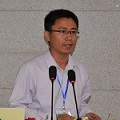Urban Mining for Resource Supply
A special issue of Resources (ISSN 2079-9276).
Deadline for manuscript submissions: closed (30 April 2018) | Viewed by 79853
Special Issue Editor
Interests: urban mining; resource evaluation; E-waste management; circular economy
Special Issues, Collections and Topics in MDPI journals
Special Issue Information
Dear Colleagues,
Urbanization is regarded the greatest topic of the 21th century. Rapid urbanization and industrialization have caused massive amounts of natural resources to be extracted from the lithosphere to the techosphere. More and more resources are destined to end up as solid waste, called urban mines. With this in mind, ‘urban mining’ is becoming an important approach to achieve the win–win situations of enhanced resource sustainability and improved environmental protection, while developing a strong, circular economy, based on re-using and recycling.
From the global point of view, the potential for urban mining, based on the quantities of resources that have been buried in landfills, and which are hibernating in cities, which, if mined, could dramatically reduce the amounts of virgin materials that have to be removed from the Earth. Therefore, urban mining can help countries reduce the pressure on natural resources and, at the same time, decrease air and water pollution from the effluents of landfills. This will help us to enable a transition towards more sustainable societies and will foster the development of many new extraction and processing industries.
Although the development of urban mining concepts and approaches is important, many challenges must be addressed. The development of urban mining will require innovative technologies, comparable with the methods of extracting and processing virgin ores. Especially, for new waste streams, their compositions are more complex mixtures of materials that are difficult to separate; furthermore, many new products are introduced into the market annually, thus making the engineering, logistical, and marketing challenges more difficult. However, the challenges also mean there are more opportunities. It is anticipated that serious involvement in improving urban mining will result in opportunities to promote resource recovery and a boom to industry.
In this context, I am seeking papers in the area of urban mining for resource supply. I am looking forward to various styles of papers, including review and research articles.
Assoc. Prof. Xianlai Zeng
Guest Editor
Manuscript Submission Information
Manuscripts should be submitted online at www.mdpi.com by registering and logging in to this website. Once you are registered, click here to go to the submission form. Manuscripts can be submitted until the deadline. All submissions that pass pre-check are peer-reviewed. Accepted papers will be published continuously in the journal (as soon as accepted) and will be listed together on the special issue website. Research articles, review articles as well as short communications are invited. For planned papers, a title and short abstract (about 100 words) can be sent to the Editorial Office for announcement on this website.
Submitted manuscripts should not have been published previously, nor be under consideration for publication elsewhere (except conference proceedings papers). All manuscripts are thoroughly refereed through a single-blind peer-review process. A guide for authors and other relevant information for submission of manuscripts is available on the Instructions for Authors page. Resources is an international peer-reviewed open access monthly journal published by MDPI.
Please visit the Instructions for Authors page before submitting a manuscript. The Article Processing Charge (APC) for publication in this open access journal is 1600 CHF (Swiss Francs). Submitted papers should be well formatted and use good English. Authors may use MDPI's English editing service prior to publication or during author revisions.
Keywords
- Urban mining
- Resource recycling
- Circular economy
- Metals
- Resource sustainability
- Resource scarcity
- Waste management
- Material flow analysis
- Life cycle assessment





